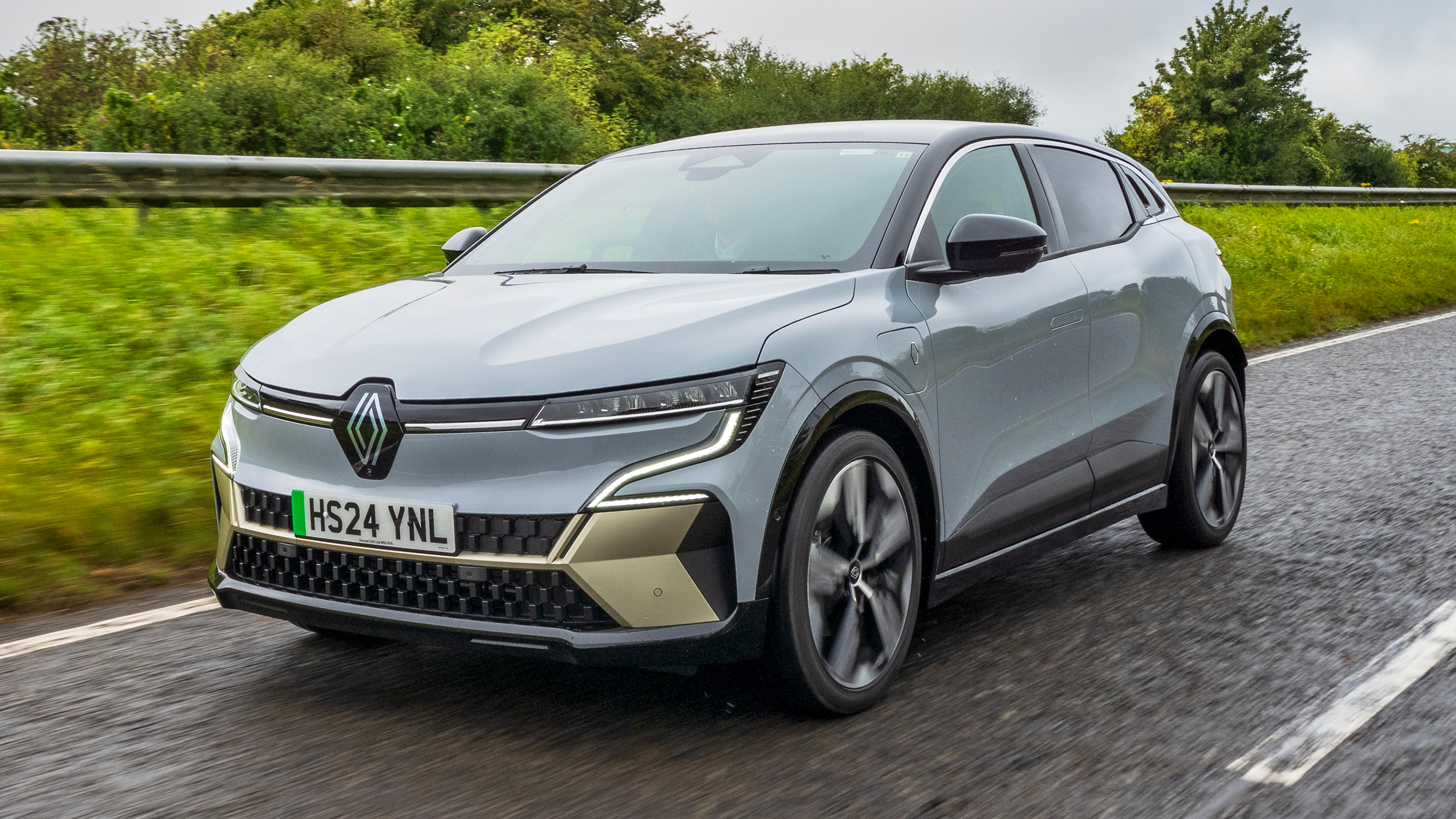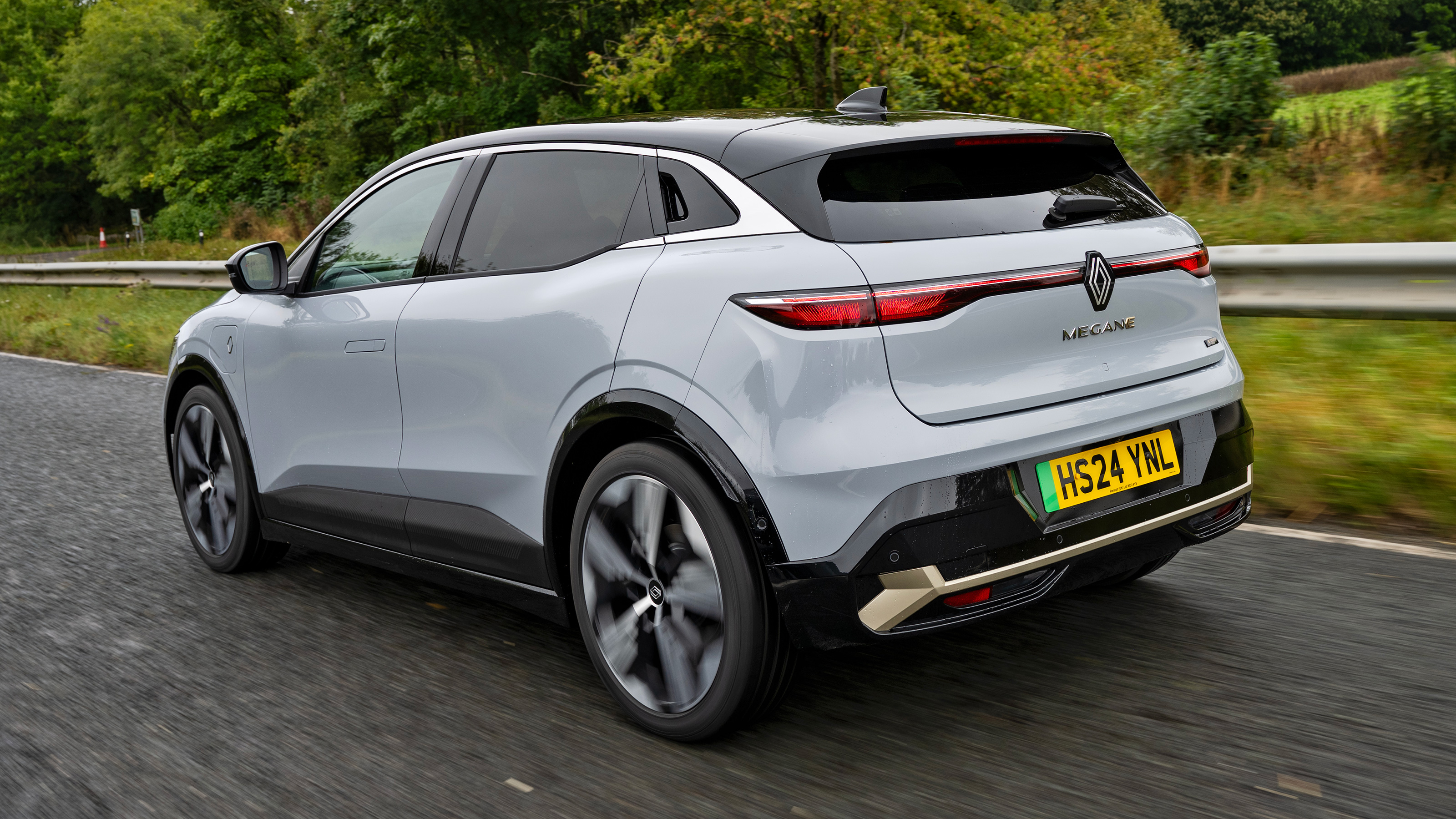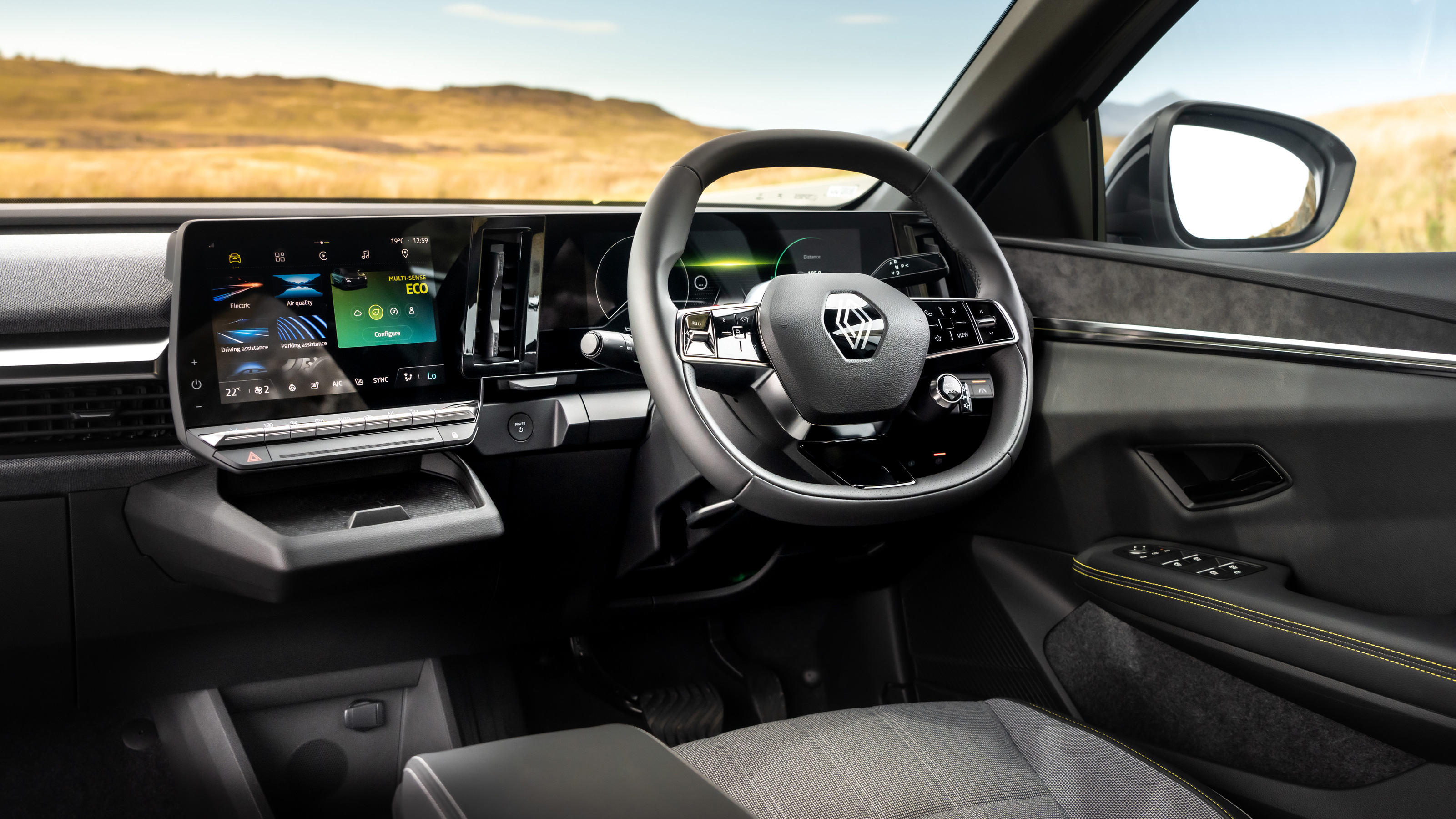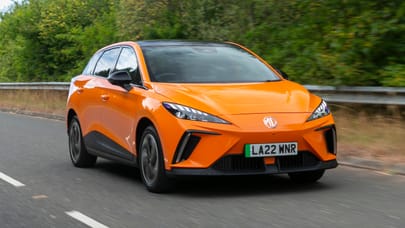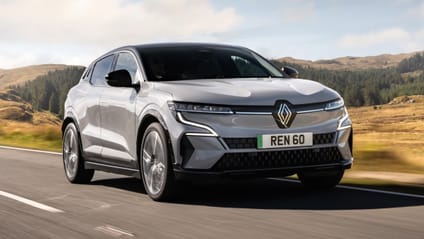
Good stuff
Properly premium cabin, head-turning looks, sorted dynamics
Bad stuff
Slightly cramped rear seats, firm-ish ride
Overview
What is it?
This is Renault's family hatch. Its full name is Megane E-Tech Electric and that’s because it's designed and built all-in for battery power. There won't be a version with an engine. That frees up the design and proportions, and removes many compromises from the engineering.
The Megane is one of a whole flotilla of electric cars from multiple brands, all using versions of the same platform. Renault's Alliance partner uses it for the intriguing Ariya crossover. Alpine will turn it into a high-performance electric crossover coupe. There's already a bigger Renault in the form of the Scenic, and there'll be Mitsubishis too.
And soon enough the same underduds will spawn the next Nissan Leaf, which will be reinvented as a compact crossover built at Sunderland. At which point the over-used phrase 'no pressure then' looms over the horizon.
And it’s had a facelift, right?
A mild one. And not in the literal sense: the face, along with the rest of the exterior design, has actually been left well alone. But Renault has introduced one or two new trinkets, including a standard heat pump for better e-efficiency, and a 12in portrait touchscreen on all but the base trim. The adaptive cruise control has got cleverer, and will now slow down for junctions etcetera.
Looks a bit crossover-y.
The proportions make it hard to judge. But it's just a normal-size family hatch. Actually a little shorter than most.
Renault argues this is not an SUV despite the black wheel-arch extensions, and true enough its roof height is lower than a VW ID.3. If you want a petrol or hybrid Renault roughly this size, it's an Arkana for you my friend. Enjoy the mediocrity.
Using a purpose-designed structure brings the expected benefits to the Megane. It mostly feels roomy and has lots of cabin storage, thanks to a flat floor and long wheelbase. The dash is moved forward because the climate-control tackle is tucked under the bonnet.
Renault actually designed two versions of this car: the regular hatch and a sporty one, with widened arches and more aggressive bumpers. Apparently the finance department didn't think much of the latter, but then Renault got a new boss in 2020 and on his second day in the job Luca de Meo said 'just make the sports one'. So the 'base' car was quietly shuffled off to oblivion.
Range and power?
The Megane is front-drive only, which gives it a bigger boot than the ID.3. 217bhp motor, 60kWh battery, and there’s DC rapid charging up to 130kW. WLTP range is 280 miles.
What about the interface?
Good question. We've had a lot of beef with EV dashboards: some rely too much on touchscreens, some deprive the driver of a proper instrument panel. But the Megane has both a big twin-screen layout and not-ungenerous rows of physical controls. The screens run on the Android Automotive operating system, but skinned in a Renault-specific way. And if you're an Appleist, it runs CarPlay too. We got on well with it.
And on the road?
The main impression is of a really mature product. But then Renault has already sold 400,000 electric vehicles, mostly Zoes, across more than a decade, and they've run six billion miles, all connected back to the Renault mothership for analysis of battery and owner behaviour.
Renault likes to call the Megane an 'electric GTI'. Which is over-egging things a bit. It lacks the involvement of a good sporty petrol hatch. Still, performance is lively and the steering quick. Multi-link suspension gives it both responsive cornering and a very quiet, refined – although not that soft – ride.
It's also efficient on its not-very-large battery, which in turn helps with rapid-recharging time.
What's it up against?
So, so many things. Another VW Group rival is the Cupra Born, while the MG4 is undoubtedly part of the conversation too.
And given the sheer number of small-ish crossover-slash-SUVs out there, it'll no doubt have to fight those for its share of the pie as well. So think Kia Niro EV, Hyundai Kona Electric, Volvo EX30, Peugeot e-2008, Mini Aceman and Jeep Avenger. Heck, you wouldn't put it past some people deciding a Tesla Model 3 is too 'out there' and resorting to one of these instead.
Also, if you want to save a bit of money and climb the desirability stakes even more… have you seen the Renault 5?
How much does it cost?
Here’s the thing, as a result of the facelift the Megane has actually got £500 cheaper. Nope, we can’t work out how either. But from £33,995, it undercuts everything mentioned above save for the Minis and MG4. Full details over on the Buying tab.
Our choice from the range

What's the verdict?
This Renault is slick to drive, so you might briefly be tempted into range-blunting speeds that negate the car's clever efficiency measures. Go sensibly though and the range compromise is enough for most.
Back seat space is possibly a little tight for a leggy family, but that's a common issue with electric cars. If it's a dealbreaker for you, get round the problem with the bigger Scenic instead.
As for the non-electric parts of it, the Megane is conventionally desirable, handsome, and the cabin is well-finished and easy to use. There's very little wrong with it. Which is more than can be said of the ID.3.
The Rivals
Trending this week
- Car Review
Renault Clio




